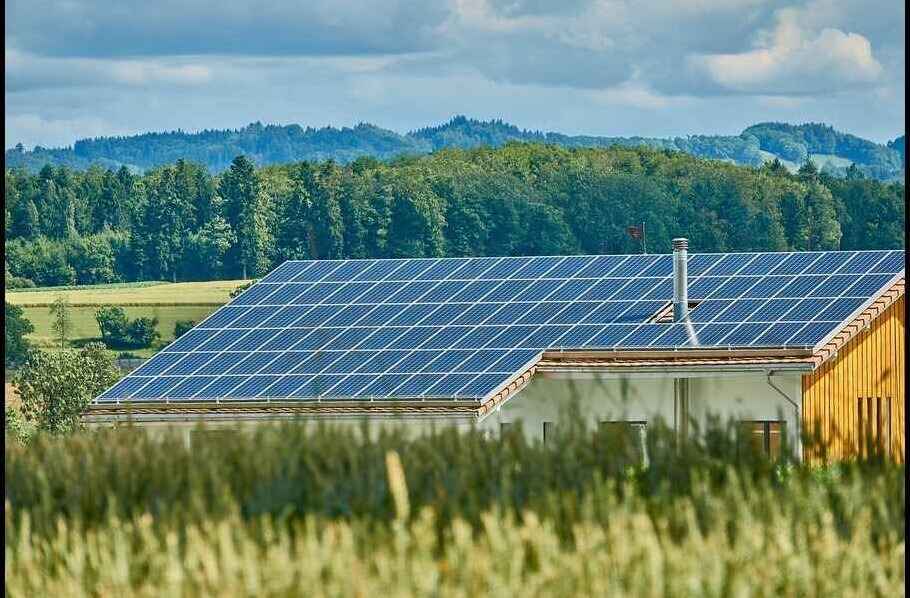By understanding and utilizing solar forecasts, U.S. businesses can unlock 20% more efficiency from their solar energy systems, leading to significant benefits for their bottom line and the environment.
The sun, a beacon of clean and abundant energy, is rapidly becoming a preferred choice for businesses and homes across the United States.
However, one of the inherent challenges of solar energy is its variability. Unlike traditional sources like coal or natural gas, the sun’s energy output fluctuates with weather patterns and cloud cover, impacting the amount of electricity your solar panels generate.
This variability can pose a challenge in maximizing the efficiency of your solar system and harnessing its full potential.

Fortunately, there’s a powerful tool at your disposal: solar forecasts. These forecasts, generated using advanced weather models and historical data, provide accurate predictions of future sunlight availability
Understanding and Implementing Solar Forecasts for Increased Efficiency
So, what exactly are solar forecasts and how can they help businesses in the US achieve greater efficiency? Simply put, solar forecasts are predictions of future solar energy production based on anticipated weather conditions.
These forecasts are generated by analyzing historical weather data, satellite imagery, and sophisticated computer models that take into account factors like:
- Cloud cover: The amount and type of cloud cover significantly impact the amount of sunlight reaching your solar panels. Thicker clouds can significantly reduce energy generation, while clear skies allow for optimal production.
- Precipitation: Rain, snow, and other forms of precipitation can temporarily block sunlight and reduce energy generation. Forecasts can help you anticipate these disruptions and adjust your energy use accordingly.
- Temperature: While less impactful than other factors, temperature can slightly influence the efficiency of solar panels. Warmer temperatures can lead to slight reductions in efficiency.
- Wind speed and direction: Wind can affect factors like dust accumulation on panels, impacting their efficiency. Forecasts can help you understand potential wind patterns and their impact on your system’s performance.
Based on these factors, solar forecasts provide different levels of granularity, catering to various needs:
- Short-term forecasts (0-6 hours): Ideal for real-time adjustments in energy usage and battery management, allowing you to optimize your system’s performance throughout the day.
- Day-ahead forecasts (1-24 hours): Useful for planning daily energy consumption and grid integration strategies. You can anticipate peak generation periods and adjust your energy use accordingly.
- Extended forecasts (2-7 days): Valuable for long-term planning and optimizing battery storage capacity, allowing you to plan for periods of lower sun production and ensure you have sufficient stored energy available.
Now that we understand how solar forecasts work, let’s explore how businesses in the US can implement them to unlock 20% more efficiency from their solar systems:
- Accessing Solar Forecasts: Fortunately, numerous resources are readily available for US businesses to access solar forecasts. Several online platforms and mobile applications offer real-time and historical solar forecast data, often specific to your location. Additionally, many smart home energy management systems can integrate with solar forecast services, automatically adjusting your energy usage based on predicted generation.
- Consulting with Professionals: If you’re unsure where to start or require personalized guidance, consider consulting with your solar installation company. They can provide valuable insights into utilizing forecasts within your specific system setup and recommend resources that best suit your needs.
- Taking Action: Once you have access to reliable forecasts, it’s time to take action. Identify the forecast type best suited to your needs and incorporate it into your daily operations.
- This could involve:
- Adjusting energy usage patterns: During periods of low predicted production, strategically shift non-critical activities to coincide with peak grid power availability.
- Conversely, schedule energy-intensive tasks like running machinery or charging electric vehicles during periods of anticipated peak solar generation
- .Optimizing battery storage: Utilize solar forecasts to strategically charge your batteries during peak sunlight hours when your panels are generating the most electricity. This stored energy can then be used during periods of lower production, maximizing self-consumption and further reducing reliance on the grid.
- Monitoring and Adapting: As with any new approach, monitoring your energy consumption and adjusting your strategies over time is crucial. By analyzing the impact of solar forecasts on your system’s efficiency, you can further refine your approach and maximize the benefits you reap.
- Refining grid integration strategies: Day-ahead forecasts can help businesses optimize their grid connection strategy. During periods of anticipated low solar production, businesses can plan to purchase grid power at favorable rates, while selling excess generation back to the grid during peak production times.
Case Studies: Real-World Examples of Efficiency Gains

Seeing how businesses are already leveraging solar forecasts for increased efficiency can be a powerful motivator. Here are two real-world examples:
Manufacturing Company in California:
A large manufacturing facility in California installed a solar energy system to power its operations. However, initial assessments revealed significant variability in electricity generation, impacting production efficiency and energy costs.
Solution: The company implemented a solar forecasting system, allowing them to:
- Adjust production schedules: By anticipating low production periods, they could shift non-critical manufacturing processes to coincide with grid power availability.
- Optimize battery storage: Forecasts helped them strategically charge batteries during peak generation, ensuring a reliable power source for essential operations during low sun periods.
Results: By incorporating solar forecasts, the company achieved a 22% increase in solar energy self-consumption and a 15% reduction in grid reliance. This led to significant cost savings on electricity bills and improved overall operational efficiency.
Retail Chain with Nationwide Locations:
A national retail chain with stores across the US decided to implement solar energy systems on their rooftops. However, managing energy consumption across numerous geographically dispersed locations presented a challenge.
Solution: The company partnered with a solar forecasting service that provided location-specific forecasts along with automated energy management tools.
- Centralized management system: The system used forecasts to optimize energy usage across all locations, automatically adjusting thermostat settings and lighting schedules based on anticipated production.
- Dynamic grid interaction: Day-ahead forecasts allowed the company to strategically purchase and sell energy back to the grid at favorable rates, further maximizing financial benefits.
Results: By leveraging solar forecasts and automated energy management, the retail chain achieved a 17% increase in average solar self-consumption across their stores, leading to substantial cost savings and a positive environmental impact.
These case studies demonstrate the tangible benefits that solar forecasts can bring to businesses in the US. By implementing these strategies, businesses can unlock significant efficiency gains, reduce reliance on the grid, and ultimately contribute to a sustainable future.
How do solar forecasts work?
Solar forecasts are generated using sophisticated computer models that take into account various factors:
- Historical weather data: This data helps the model identify patterns and trends in weather conditions, allowing for more accurate predictions.
- Satellite imagery: Real-time satellite images provide insights into current cloud cover and atmospheric conditions, contributing to forecast accuracy.
- Weather models: Advanced weather models predict future weather patterns, including cloud cover, precipitation, temperature, and wind speed, which significantly impact solar energy production.
Benefits of using solar forecasts:
There are multiple benefits to utilizing solar forecasts, especially for businesses in the US:
- Increased efficiency: By anticipating periods of low or high solar production, businesses can adjust their energy usage patterns to maximize self-consumption and minimize reliance on the grid. This leads to improved operational efficiency and cost savings.
- Improved battery storage management: Forecasts allow for strategic charging of batteries during peak generation periods, ensuring a reliable power source during times of lower production. This maximizes the utilization of stored solar energy and reduces grid dependence.
- Reduced reliance on the grid: By understanding forecasts, businesses can minimize their reliance on the grid, particularly during peak hours when electricity costs are typically higher.
- Dynamic grid interaction: Day-ahead forecasts allow businesses to strategically buy and sell energy back to the grid at favorable rates, further maximizing financial benefits.
How to use solar forecasts for businesses:
Several ways exist for businesses to utilize solar forecasts and improve their solar energy efficiency:
- Access forecasts: Numerous online platforms, mobile applications, and smart home energy management systems offer real-time and historical solar forecast data, often specific to your location.
- Consult with professionals: Your solar installation company can provide valuable insights on utilizing forecasts within your specific system setup and recommend resources best suited to your needs.
- Take action: Integrate forecasts into your operations by adjusting energy usage patterns (shifting activities to coincide with peak/low production), optimizing battery storage, and refining grid integration strategies.
- Monitor and adapt: Continuously monitor your energy consumption and adjust your strategies over time to maximize the benefits of solar forecasts.
Solar forecasts for efficiency:
Solar forecasts are not just about predicting future sunshine; they are a powerful tool for businesses to unlock significant efficiency gains from their solar energy systems. By incorporating forecasts into their operations, businesses can optimize energy usage, maximize self-consumption, and minimize reliance on the grid, leading to substantial cost savings and a more efficient and sustainable energy footprint.
Conclusion
Harnessing the power of the sun is an increasingly attractive and sustainable solution for businesses in the US. While variability can pose a challenge, solar forecasts offer a powerful tool to overcome this hurdle and maximize the efficiency of your solar energy system.
By understanding how solar forecasts work, implementing them in your operations, and exploring available tools and resources, your business can unlock the full potential of solar energy, reaping significant environmental and financial rewards.





